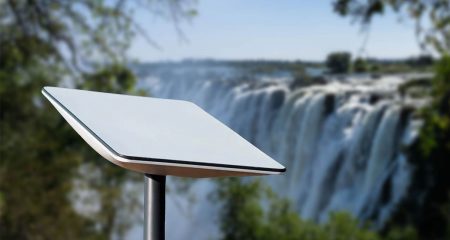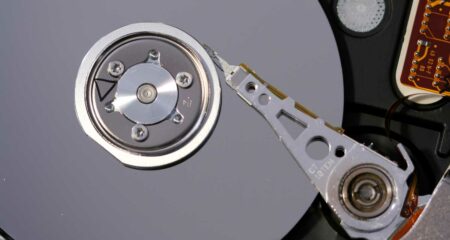 A few years ago, I needed a new hard drive for my media centre. It became an agonising ordeal. Storage was expensive, but eventually a 1TB hard drive started costing only around R2 000. I jumped in, bought the drive and never looked back. It was my last personal storage purchase — the need for more storage has never arrived again, other than shuffling things around on USB sticks.
A few years ago, I needed a new hard drive for my media centre. It became an agonising ordeal. Storage was expensive, but eventually a 1TB hard drive started costing only around R2 000. I jumped in, bought the drive and never looked back. It was my last personal storage purchase — the need for more storage has never arrived again, other than shuffling things around on USB sticks.
There are two reasons for this. Firstly, 1TB is a lot. Unless you are a compulsive hoarder or insist all your — erm — acquired movies must be in 1080p resolution, there hardly exists a need to have a personal external that is larger. Note my language: “personal external”. Internal hard drives, especially in desktops, can still be large and there is a lot of scope for size in parts of the professional world.
On the other hand, external drives are almost certainly losing appeal in business circles, if only because keeping company data on a portable drive is foolish. Never mind how much cloud has eroded that part of the market. In South Africa the only real bulwark to large-scale cloud adoption remains the cost of broadband.
But drive manufacturers are fighting back. This week’s press release is from Western Digital (WD), arguably the best — or at least best-known — hard drive brand. It is one of the market stalwarts alongside Seagate, and both companies have been trying to carve new niches for their devices. In this release, WD touts its wireless-enabled My Passport portable drives, which allow other devices to connect easily to them through Wi-Fi. The new perks of these external drives are great: a wireless hard drive will definitely make my life more convenient. On the other hand, they appear to cost about twice as much as regular externals.
In addition, WD also markets an app that will make it easy to shift files from your wireless drive to a cloud service. This is obviously to meet a customer need: cloud is increasingly the home of storage for mobile device users. But it also seems a bit counterintuitive. If your customers move everything to the cloud, won’t they eventually stop buying your hardware?
Are we seeing the end of external hard drives for personal use? As mentioned at the start of this column, I haven’t bought a new drive in years and I don’t need to until my current data workhorse goes belly-up. At most I might have to get a second drive as a backup. But all my critical backups live on Amazon’s cloud service, which has just launched an unlimited storage option.
Hard drive manufacturers aren’t going extinct: the world needs more and more storage and they are the guys to provide that. But most of that storage is going online. Personal devices are on the decline. A 2013 report by Futuresource Consulting shows that sales in Europe have been declining since 2010. I think that is because the main game for storage — capacity — had stalled. Hoarding habits are not what they used to be and mainstream consumers increasingly store their content in the cloud or simply stream it.
The personal portable drive market is caught in a catch-22 situation. External drive prices are clearly stuck in a rut. Today you can expect to pay less than R1 000/TB and the most recent broadsheets from my local newspaper are even advertising 4TB capacities for less than R3 000. It has become so cheap to make hard drives that the profit is in selling capacity, but capacity is no longer a serious sales feature.

Pushing premium devices like the My Passport Wireless would normally be a smart move, but the thing about a premium item is there needs to be real demand for its lucrative qualities. Does paying double just to get wireless access really solve any serious problems in our lives?
But let’s not be too sad about this. The reality is that personal portable storage was a brief golden age for the hard drive world, one that had its main run in the last 15 years or so. For a decade and a bit, WD, Seagate and their peers became household names, not obscure gear inside intimidating computers.
Solid-state drives (SSDs) are sometimes touted as storage’s second coming, but a lot of what that market can muster goes into phones or high-end servers, not consumer portables. SSDs aren’t even standard on most laptops.
So what is a hard drive manufacturer to do? While adding new features like wireless is a smart play, it’s not the long game. WD has more traction through its successful media centre family and that could serve it well. But for the hard drive, perhaps the giddy days of courting the casual consumer are fading.
I could be wrong, but adding features that double the price of your product in a depressed market is not going to make a difference. Not when you are already practically giving it away.
- James Francis is a freelance writer whose work has appeared in several local and international publications
- Read previous columns by Francis




